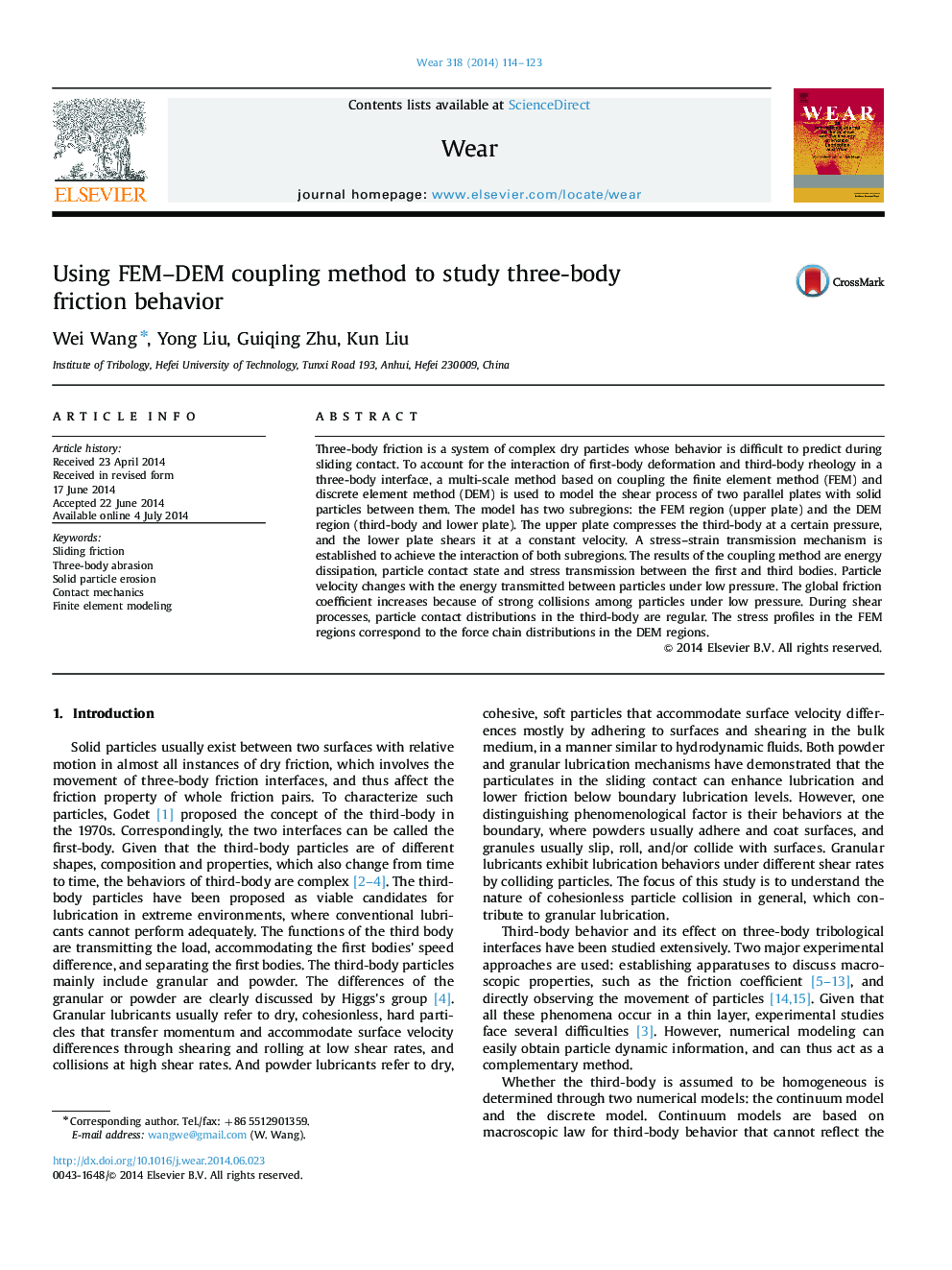| کد مقاله | کد نشریه | سال انتشار | مقاله انگلیسی | نسخه تمام متن |
|---|---|---|---|---|
| 617229 | 1454984 | 2014 | 10 صفحه PDF | دانلود رایگان |
عنوان انگلیسی مقاله ISI
Using FEM-DEM coupling method to study three-body friction behavior
دانلود مقاله + سفارش ترجمه
دانلود مقاله ISI انگلیسی
رایگان برای ایرانیان
کلمات کلیدی
موضوعات مرتبط
مهندسی و علوم پایه
مهندسی شیمی
شیمی کلوئیدی و سطحی
پیش نمایش صفحه اول مقاله

چکیده انگلیسی
Three-body friction is a system of complex dry particles whose behavior is difficult to predict during sliding contact. To account for the interaction of first-body deformation and third-body rheology in a three-body interface, a multi-scale method based on coupling the finite element method (FEM) and discrete element method (DEM) is used to model the shear process of two parallel plates with solid particles between them. The model has two subregions: the FEM region (upper plate) and the DEM region (third-body and lower plate). The upper plate compresses the third-body at a certain pressure, and the lower plate shears it at a constant velocity. A stress-strain transmission mechanism is established to achieve the interaction of both subregions. The results of the coupling method are energy dissipation, particle contact state and stress transmission between the first and third bodies. Particle velocity changes with the energy transmitted between particles under low pressure. The global friction coefficient increases because of strong collisions among particles under low pressure. During shear processes, particle contact distributions in the third-body are regular. The stress profiles in the FEM regions correspond to the force chain distributions in the DEM regions.
ناشر
Database: Elsevier - ScienceDirect (ساینس دایرکت)
Journal: Wear - Volume 318, Issues 1â2, 15 October 2014, Pages 114-123
Journal: Wear - Volume 318, Issues 1â2, 15 October 2014, Pages 114-123
نویسندگان
Wei Wang, Yong Liu, Guiqing Zhu, Kun Liu,